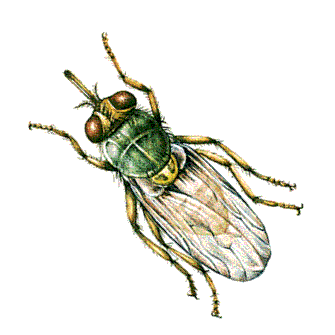ENTOMOLOGY 2040 |
 |
ENTOMOLOGY 2040 |
 |
1. Lyme disease.
a. Nature of the disease.
b. Historical perspective.
c. Transmission and vectors.
d. Geographical distribution.
e. Populations at risk.
f. Sources of disease.
g. Reducing risk future.
2. Rocky mountain spotted fever.
a. Nature of the disease.
b. Historical perspective.
c. Sources of disease.
d. Methods of transmission.
e. Vectors.
f. Distribution.
g. Populations.
h. Reducing risk.
i. Future.
2. History. Known since 14th Century. Arab slave traders concerned.
Early 1900's cause and vectors discovered.
3. Distribution. Tropical Africa (only where Tsetse occurs). 4.5 million square miles.
4. Importance. Less so before travel common.
8. Treatment and control.
a. Three approaches to treatment.
(1) Treat illness.
(2) Attack vectors.
(3) Resistant "varieties".
b. Treatments--two kinds of drugs available.
(1) One kills parasites in blood. Early treatment, quite effective.
(2) Second for parasites in C.S. fluid--toxic, much care needed.
c. Control vectors.
(1) Insecticides.
(2) Reduce habitat.
(3) Resistant livestock (Nagana).
| Return to Table of Contents |
A Field Guide to the Study of the Insects of America North of Mexico. Donald J. Borror and Richard E. White. 1970. Peterson Field Guide. Houghton Mifflin, Boston, 404 p.
A Field Guide to the Beetles of North America. White, Richard E. 1983. Peterson Field Guide Series. Houghton Mifflin Co. Boston, 368 p.
Destructive and Useful Insects: Their Habits and Control. Metcalf, Robert L. and Robert A. Metcalf. 1993. Fifth Ed. McGraw-Hill, New York.
The Hive and the Honey Bee. 1976. Various Authors. Dadant and Sons, Hamilton, IL.
Insect Appreciation Digest. T. Tom Turpin, The Entomology Foundation, Lanham, MD. 144 p.
Insects and other Pests Associated with Turf: Some Important, Common and Potential Pests in the Southeastern United States. 1982. J. R. Baker, Ed. N. C. Ag. Ext. Pub. AG-268, 109 p.
Insects and other Pests of Man and Anmials: Some Important, Common and Potential Pests in the Southeastern United States. 1986. J. R. Baker, C. S. Apperson and J. J. Arands, Eds. N. C. Ag. Ext. Pub. AG-389, 92 p.
Insects and Related Pests of Flowers and Foliage Plants: Some Important, Common and Potential Pests in the Southeastern United States. 1994. J. R. Baker, Ed. N. C. Ag. Ext. Pub. AG-136, 106 p.
Insects and Related Pests of Shrubs: Some Important, Common and Potential Pests in the Southeastern United States. 1993. R. Baker, Ed. N. C. Ag. Ext. Pub. AG-189, 199 p.
Insects and Related Pests of Field Crops: Some Important, Common and Potential Pests in the Southeastern United States. 1982. T. N. Hunt and J. R. Baker, Eds. N. C. Ag. Ext. Pub. AG-268, 214 p.
Insects and Related Pests of Vegetables: Some Important, Common and Potential Pests in the Southeastern United States. 1983. K. A. Sorenson and J. R. Baker, Eds. N. C. Ag. Ext. Pub. AG-295, 173 p.
Eastern Moths: 1984. Charles V. Covell, Jr. Peterson Field Guide Series. Houghton Mifflin. 496 p.
| Return to Table of Contents |